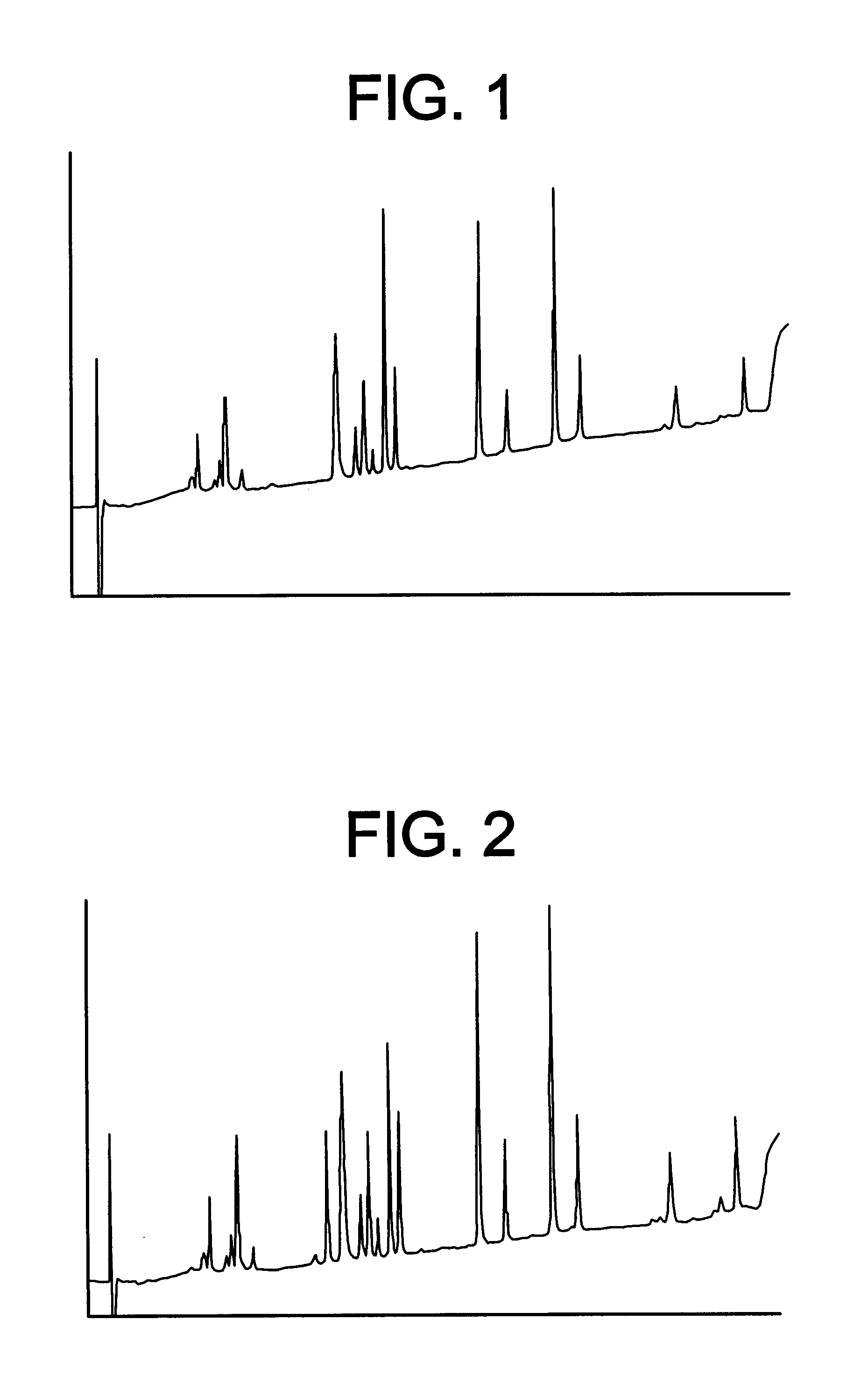Method of preparing pharmaceutical compositions
a technology of compositions and pharmaceuticals, applied in the direction of medical preparations, liposomal delivery, pharmaceutical delivery mechanisms, etc., can solve the problems of inhibiting the use of drug parenteral drug carriers, reducing the stability of proteins, and reducing the safety of administration
- Summary
- Abstract
- Description
- Claims
- Application Information
AI Technical Summary
Benefits of technology
Problems solved by technology
Method used
Image
Examples
example 1
0.687 g SPC (soy bean phosphatidyl choline) is mixed in a premixing step in a jacketed vessel with 45.80 g of a protein solution comprising apolipoprotein A-I.sub.Milano, (Apo A-IM) obtained from the downstream process from recombinant production with a protein concentration of 12 mg / ml, in sodium phosphate buffer. The ratio lipid to protein was thus 1.25:1. The temperature was regulated to 60.degree. C. by a Julabo ATS 2 reactor temperature regulator. An Ystral mixer in a rotor and stator configuration is used as mixer with stirring speed controlled at 2000 rpm. After 10 minutes of pre-mixing, the mixture is homogenized in a mini Rannie homogenizer, Mini-Lab type 7.30 VH, at a pressure of 1000 bar, 60.degree. C. continuously for 5 minutes. This method results in the formation of transparent solution of lipid-protein particles with a structure resembling disc-formed native HDL-like complex. The yield of protein incorporated into lipid complexes as detected by native-PAGE is 98% (acc...
example 2
0.47 g of recombinant apolipoprotein A-I.sub.Milano,(Apo A-IM), (9.6 mg protein / ml in a phosphate buffer) and soybean phosphatidyl choline (SPC) added to 1:1 lipid / protein ratio (w / w) was premixed at 60.degree. C. for 10 minutes and then homogenized for 5 minutes at 60.degree. C. and 1000 bar in the mini-Rannie homogenizer of Example 1. All protein was incorporated into 8 nm lipid-protein particles as measured by n-PAGE (according to the method described below). Accordingly, it is demonstrated that a high incorporation of apolipoprotein A-I.sub.Milano into lipid-protein particles is obtained in the homogenization process although a low ratio of lipid to protein is used.
A similar experiment was performed with same components and during the same conditions as above, except that the homogenization was performed at 560 bars for 7 minutes at 60.degree. C. According to subsequently performed chromatographic and electrophoretic analyses, the protein is essentially unchanged in the process....
example 3
69.00 g of a solution of recombinantly produced Apo A-IM (19.8 mg / ml solution in water) was homogenized together with 4.485 g dipalmitoyl phosphatidyl choline (DPPC) at 42.degree. C. and 1000 bar for 60 minutes with a Mini Rannie homogenizer. Before homogenization, the mixture was pre-mixed for 5 minutes at 42.degree. C. at 2000 rpm in a nitrogen atmosphere. The ratio DPPC: Apo A-IM was 3.3:1 (w / w). Analysis for protein denaturation (deamidation, oxidation or aggregation) was made by peptide mapping, isoelectric focusing, size exclusion chromatography and reverse phase chromatography (HyTach). The data for the Apo A-IM protein in the processed material was in compliance with protein material which was not subjected to homogenization, as demonstrated by HyTach data in FIG. 3 and FIG. 4 (measured with a method disclosed below). The amount of protein incorporated into lipoprotein particles (in the size range 7.7-15.7 nm) was 100% according to densitometric scans of n-PAGE stained gels ...
PUM
 Login to View More
Login to View More Abstract
Description
Claims
Application Information
 Login to View More
Login to View More - R&D
- Intellectual Property
- Life Sciences
- Materials
- Tech Scout
- Unparalleled Data Quality
- Higher Quality Content
- 60% Fewer Hallucinations
Browse by: Latest US Patents, China's latest patents, Technical Efficacy Thesaurus, Application Domain, Technology Topic, Popular Technical Reports.
© 2025 PatSnap. All rights reserved.Legal|Privacy policy|Modern Slavery Act Transparency Statement|Sitemap|About US| Contact US: help@patsnap.com



